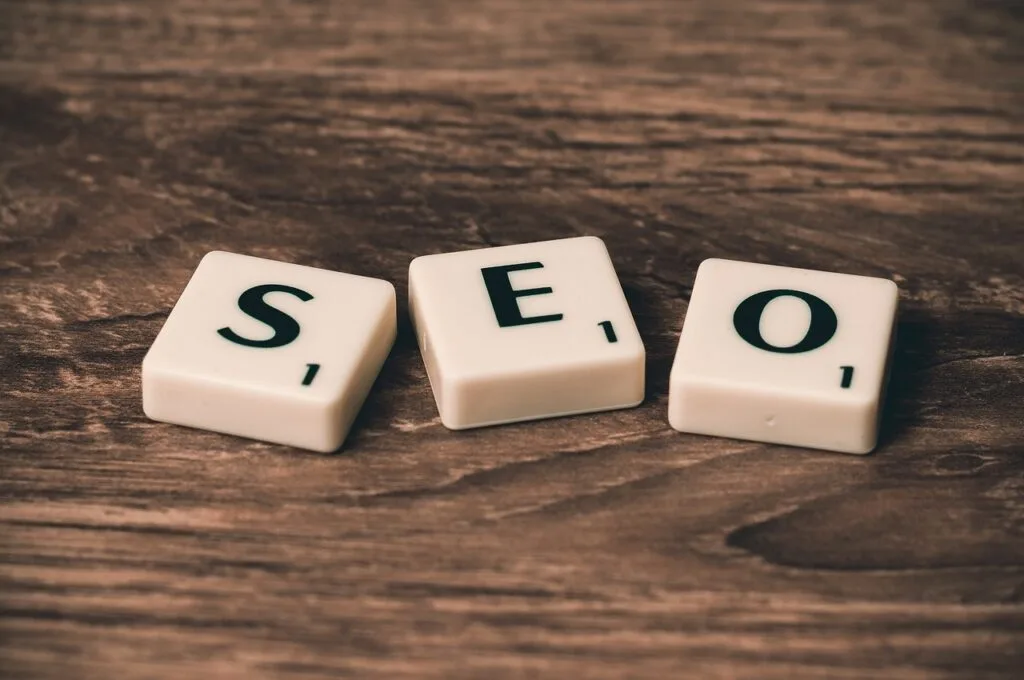- 1. How does marketing automation impact lead generation?
- 2. What effect does marketing automation have on conversion rates?
- 3. How much time can marketing automation save?
- 4. How quickly do businesses see a return on investment with marketing automation?
- 5. What percentage of companies see a positive ROI within the first year of using marketing automation?
- 6. How does marketing automation improve sales productivity?
- 7. How does marketing automation affect the quality of leads?
- 8. How prevalent is marketing automation among top-performing companies?
- 9. How does marketing automation impact marketing overhead?
- 10. How does marketing automation contribute to business growth?
- 11. How does marketing automation influence sales opportunities for B2B marketers?
- 12. How important is marketing automation for overall marketing success?
- 13. What impact does marketing automation have on lead qualification?
- 14. How widespread is the use of marketing automation in businesses?
- 15. How quickly can revenue increase with automated lead management?
- 16. How does marketing automation impact marketing operations efficiency?
- 17. What effect does marketing automation have on conversion rates?
- 18. How do personalized email campaigns benefit from marketing automation?
- 19. How does marketing automation affect customer retention?
- 20. What are the combined benefits of marketing automation on sales productivity and marketing overhead?
- 21. How prevalent is the use of marketing automation tools among companies?
- 22. How does lead nurturing with marketing automation affect sales-ready leads?
- 23. What percentage of marketers generate more leads using automation software?
- 24. How do automated emails compare to regular marketing messages?
- 25. What is the primary reason top-performing CMOs implement marketing automation?
- 26. How do businesses using marketing automation compare to their competitors?
- 27. What impact does marketing automation have on the sales pipeline?
- 28. How do B2B marketers measure the impact of marketing automation on the sales pipeline?
- 29. What are the primary goals for implementing marketing automation among marketers?
- 30. How does marketing automation help businesses better target their customers?
- We got all the latest Marketing Stats here:
Marketing automation has revolutionized the way businesses connect with their audiences, streamline their processes, and ultimately boost their return on investment (ROI). As we move into 2024, understanding the impact of marketing automation on ROI is crucial for businesses aiming to stay competitive and efficient. This article dives into key statistics that highlight the benefits of marketing automation, providing actionable insights and strategies for leveraging this powerful tool to maximize your marketing efforts.
1. How does marketing automation impact lead generation?

80% of marketing automation users saw an increase in the number of leads.
Marketing automation significantly enhances lead generation by automating repetitive tasks, such as email campaigns, social media postings, and ad management. By streamlining these processes, marketing teams can focus on crafting compelling content and nurturing relationships with potential customers. Automated lead generation tools also ensure that leads are captured and followed up on promptly, increasing the chances of conversion.
Actionable Advice:
- Use Lead Scoring: Implement lead scoring to prioritize leads based on their engagement level and potential value. This helps sales teams focus on the most promising leads.
- Segment Your Audience: Use automation to segment your audience based on demographics, behaviors, and preferences. Tailored messaging can significantly improve lead generation efforts.
- Multi-Channel Campaigns: Automate campaigns across multiple channels (email, social media, SMS) to reach leads wherever they are most active.
- A/B Testing: Continuously test different messages, subject lines, and calls to action to optimize your lead generation strategy.
2. What effect does marketing automation have on conversion rates?
77% of marketers using automation saw an increase in conversions.
Automation allows for more personalized and timely interactions with potential customers, which can greatly improve conversion rates. By delivering tailored content at the right time, businesses can engage prospects more effectively, addressing their specific needs and pain points. Automated workflows ensure that no lead is left unattended, moving them smoothly through the sales funnel.
Actionable Advice:
- Personalized Follow-Ups: Use automation to send personalized follow-up emails based on user behavior. For instance, if a user abandons their cart, an automated email reminding them of their items can encourage conversion.
- Behavioral Triggers: Set up triggers to send targeted messages based on user actions, such as visiting a product page multiple times or downloading a whitepaper.
- Nurture Campaigns: Develop automated nurture campaigns that guide prospects through the buyer’s journey with relevant content and offers.
3. How much time can marketing automation save?
74% of marketers say automation saves them time.
One of the most immediate benefits of marketing automation is the time savings it provides. Automating repetitive tasks frees up valuable time for marketing teams to focus on strategic planning and creative work. This increased efficiency can lead to faster project completion and the ability to manage more campaigns simultaneously.
Actionable Advice:
- Automate Routine Tasks: Identify repetitive tasks, such as sending welcome emails or social media posting, and automate them to save time.
- Use Templates: Create templates for emails, landing pages, and reports that can be easily customized and reused.
- Set Up Workflows: Develop comprehensive workflows for common processes, such as lead nurturing or event registration, to streamline operations.
4. How quickly do businesses see a return on investment with marketing automation?
65% of businesses reported a significant boost in ROI within the first year of using marketing automation.
Marketing automation delivers results relatively quickly. Within the first year, a majority of businesses see a noticeable improvement in their ROI. This rapid return can be attributed to the enhanced efficiency, better-targeted campaigns, and increased lead nurturing capabilities that automation provides.
Actionable Advice:
- Track Key Metrics: Identify and monitor key performance indicators (KPIs) to measure the impact of automation on your ROI. These can include lead conversion rates, customer acquisition costs, and overall sales.
- Optimize Campaigns: Regularly review and optimize automated campaigns based on performance data to ensure continuous improvement and better ROI.
- Invest in Training: Ensure your team is well-trained in using automation tools to maximize their potential and drive better results.
5. What percentage of companies see a positive ROI within the first year of using marketing automation?
76% of companies using marketing automation see a positive ROI within the first year.
The adoption of marketing automation tools often leads to a quick and substantial return on investment. The automation of marketing processes reduces costs and increases the effectiveness of campaigns, contributing to a positive ROI in a short timeframe.
Actionable Advice:
- Start Small: Begin with automating a few key processes and gradually expand as you see positive results.
- Regular Audits: Conduct regular audits of your automation processes to identify areas for improvement and ensure you are maximizing ROI.
- Customer Feedback: Collect and analyze customer feedback to refine automated processes and enhance customer satisfaction.
6. How does marketing automation improve sales productivity?
Marketing automation can lead to a 14.5% increase in sales productivity.
By automating lead management and nurturing processes, sales teams can focus more on closing deals rather than on administrative tasks. This increase in productivity allows sales teams to engage with more leads and close deals faster, directly contributing to higher sales figures.
Actionable Advice:
- Automate Lead Distribution: Use automation to assign leads to sales representatives based on criteria such as territory, industry, or product interest.
- Provide Sales Insights: Use automation to deliver real-time insights and analytics to your sales team, helping them prioritize leads and tailor their approach.
- Integrate CRM: Ensure your marketing automation platform integrates seamlessly with your CRM to provide a unified view of customer interactions and streamline sales processes.
7. How does marketing automation affect the quality of leads?
Businesses that use marketing automation to nurture prospects experience a 451% increase in qualified leads.
Marketing automation helps in nurturing leads by providing personalized content and interactions based on their behavior and preferences. This targeted approach results in a higher quality of leads, as prospects are more informed and engaged by the time they reach the sales team.
Actionable Advice:
- Segmentation: Segment your leads based on demographics, behavior, and engagement to deliver more relevant content.
- Scoring Models: Implement lead scoring models to evaluate the readiness of leads for sales engagement.
- Educational Content: Use automation to deliver educational content that addresses common pain points and questions, helping to qualify leads.
8. How prevalent is marketing automation among top-performing companies?
57% of top-performing companies use marketing automation.
Top-performing companies recognize the value of marketing automation in driving efficiency and results. By adopting these tools, they can maintain a competitive edge, streamline their marketing processes, and achieve better outcomes.
Actionable Advice:
- Benchmarking: Compare your marketing processes and results with those of top-performing companies to identify areas for improvement.
- Case Studies: Study case studies of successful implementations of marketing automation to gain insights and best practices.
- Continuous Learning: Stay updated with the latest trends and advancements in marketing automation to keep your strategies effective and innovative.
9. How does marketing automation impact marketing overhead?
Marketing automation drives a 12.2% reduction in marketing overhead.
Automation reduces the need for manual intervention in many marketing tasks, which can lower operational costs. By automating processes such as email marketing, social media management, and lead nurturing, businesses can allocate resources more effectively and reduce overhead expenses.
Actionable Advice:
- Resource Allocation: Reallocate resources saved through automation to more strategic initiatives such as content creation or market research.
- Cost-Benefit Analysis: Regularly perform cost-benefit analyses to ensure your automation tools are providing the desired ROI.
- Vendor Negotiation: Negotiate with automation vendors for better pricing or additional features that can further reduce costs.
10. How does marketing automation contribute to business growth?

63% of companies outgrowing their competitors use marketing automation.
Companies that leverage marketing automation often see accelerated growth compared to their competitors. Automation enables more efficient marketing efforts, better customer targeting, and improved lead management, all of which contribute to business growth.
Actionable Advice:
- Growth Metrics: Track specific growth metrics such as market share, customer acquisition, and revenue growth to measure the impact of automation.
- Scalable Solutions: Choose scalable automation solutions that can grow with your business and adapt to increasing demands.
- Innovation: Continuously innovate your marketing strategies with automation to stay ahead of competitors and capture new market opportunities.
11. How does marketing automation influence sales opportunities for B2B marketers?
B2B marketers see an average 20% increase in sales opportunities from marketing automation.
Marketing automation enhances the ability to identify and nurture leads, leading to a significant increase in sales opportunities. By automating the tracking of user interactions and behaviors, marketers can better understand the needs and interests of their prospects, allowing for more targeted and effective outreach.
Actionable Advice:
- Account-Based Marketing (ABM): Use automation to implement ABM strategies that focus on high-value accounts and deliver personalized content to key decision-makers.
- Data Analysis: Leverage data analytics to identify trends and patterns in customer behavior, helping to uncover new sales opportunities.
- Collaboration Tools: Implement tools that facilitate collaboration between marketing and sales teams, ensuring a seamless handoff of qualified leads.
12. How important is marketing automation for overall marketing success?
91% of marketing automation users agree it is “very important” to the overall success of their marketing across channels.
Marketing automation is viewed as a critical component of a successful marketing strategy. Its ability to integrate and streamline efforts across various channels ensures consistent and effective communication with the audience, leading to better overall marketing performance.
Actionable Advice:
- Integrated Campaigns: Develop integrated marketing campaigns that leverage multiple channels such as email, social media, and web, ensuring a cohesive message.
- Cross-Channel Tracking: Use automation to track customer interactions across different channels, providing a holistic view of the customer journey.
3. Consistent Branding: Ensure that all automated communications reflect consistent branding and messaging to reinforce brand identity.
13. What impact does marketing automation have on lead qualification?
Companies using marketing automation see a 451% increase in qualified leads.
By automating the lead qualification process, businesses can more efficiently identify and prioritize high-quality leads. Automation tools analyze behaviors and engagement levels to score and segment leads, ensuring that the sales team focuses on the most promising prospects.
Actionable Advice:
- Dynamic Scoring: Implement dynamic lead scoring models that adjust scores based on real-time behavior and engagement.
- Automated Workflows: Create automated workflows that move leads through different stages based on their score and readiness.
- Predictive Analytics: Use predictive analytics to forecast which leads are most likely to convert, allowing for more focused efforts.
14. How widespread is the use of marketing automation in businesses?
68% of businesses report using automation in some way.
Marketing automation is becoming increasingly common across industries. A significant majority of businesses have adopted some form of automation to streamline their marketing efforts, enhance customer engagement, and improve operational efficiency.
Actionable Advice:
- Industry Benchmarks: Compare your automation usage with industry benchmarks to understand how you stack up and identify areas for improvement.
- Adoption Strategies: Develop clear strategies for adopting and implementing automation tools, including training and support for your team.
- Technology Integration: Ensure that your automation tools integrate well with your existing technology stack to maximize their effectiveness.
15. How quickly can revenue increase with automated lead management?
Companies that automate lead management see a 10% or more bump in revenue in 6-9 months.
Automating lead management processes can result in a quick and noticeable increase in revenue. By ensuring that leads are promptly and effectively nurtured, businesses can accelerate the sales cycle and close more deals in a shorter period.
Actionable Advice:
- Fast Response: Use automation to ensure that leads receive immediate responses, reducing the time it takes to engage with potential customers.
- Pipeline Management: Automate the tracking and management of your sales pipeline to identify bottlenecks and streamline the sales process.
- Performance Monitoring: Continuously monitor the performance of your lead management processes and make data-driven adjustments to optimize revenue growth.

16. How does marketing automation impact marketing operations efficiency?
60% of marketers use marketing automation to increase the efficiency of their marketing operations.
Marketing automation tools streamline marketing operations by automating repetitive tasks and providing comprehensive analytics. This increased efficiency allows marketing teams to focus on strategic initiatives, ultimately enhancing their overall effectiveness.
Actionable Advice:
- Workflow Automation: Map out your marketing processes and identify repetitive tasks that can be automated, such as email marketing, social media posting, and reporting.
- Centralized Management: Use a centralized marketing automation platform to manage all campaigns from a single dashboard, improving coordination and oversight.
- Performance Tracking: Implement automated performance tracking to continuously monitor and optimize your campaigns, ensuring that your efforts yield the best possible results.
17. What effect does marketing automation have on conversion rates?
Marketing automation can improve conversion rates by 53%.
Automated marketing processes ensure timely and relevant interactions with potential customers, significantly improving conversion rates. By delivering personalized content based on user behavior and preferences, businesses can effectively guide prospects through the sales funnel.
Actionable Advice:
- Behavior-Based Triggers: Set up behavior-based triggers to automatically send relevant content or offers when a prospect performs specific actions, such as visiting a product page or downloading a resource.
- Retargeting Campaigns: Use automation to create retargeting campaigns that re-engage prospects who have shown interest but have not yet converted.
- Dynamic Content: Implement dynamic content in your emails and landing pages to tailor the messaging based on individual user data, making the communication more relevant and persuasive.
18. How do personalized email campaigns benefit from marketing automation?
Personalized email campaigns through marketing automation can improve click-through rates by 14% and conversion rates by 10%.
Automation enables the delivery of highly personalized email campaigns that resonate with recipients. By leveraging data on customer behavior and preferences, businesses can create targeted messages that drive higher engagement and conversion rates.
Actionable Advice:
- Segment Your Audience: Use automation to segment your email list based on demographics, purchase history, and engagement levels. This allows you to send more targeted and relevant emails.
- Personalized Recommendations: Incorporate personalized product recommendations in your emails based on past purchases and browsing behavior to increase relevance and drive conversions.
- A/B Testing: Continuously test different email subject lines, content, and CTAs to determine what resonates best with your audience and optimize accordingly.
19. How does marketing automation affect customer retention?
58% of marketers say that marketing automation improved customer retention.
Marketing automation not only helps in acquiring new customers but also plays a crucial role in retaining existing ones. Automated customer engagement strategies, such as personalized follow-ups and loyalty programs, can enhance customer satisfaction and loyalty.
Actionable Advice:
- Automated Follow-Ups: Set up automated follow-up emails to check in with customers after a purchase, solicit feedback, and offer support or additional product recommendations.
- Loyalty Programs: Use automation to manage loyalty programs, including the distribution of points, rewards, and personalized offers to keep customers engaged and coming back.
- Customer Segmentation: Segment your customers based on their engagement and purchase history to tailor retention strategies that address the specific needs and preferences of each group.
20. What are the combined benefits of marketing automation on sales productivity and marketing overhead?

Marketing automation can generate a 14.5% increase in sales productivity and a 12.2% reduction in marketing overhead.
The dual benefits of increased sales productivity and reduced marketing overhead make marketing automation a highly valuable tool. By automating repetitive tasks and improving lead management, businesses can achieve better results with lower costs.
Actionable Advice:
- Cost Analysis: Regularly analyze the costs associated with manual marketing tasks and compare them to the cost savings achieved through automation.
- Resource Reallocation: Reallocate resources saved through automation to high-impact areas such as strategic planning, content creation, and customer experience improvements.
- Sales and Marketing Alignment: Use automation to align sales and marketing efforts, ensuring a seamless handoff of leads and better collaboration between teams.
21. How prevalent is the use of marketing automation tools among companies?
75% of all companies already use at least one type of marketing automation tool.
The widespread adoption of marketing automation tools highlights their importance in modern marketing strategies. Most companies recognize the value these tools bring in terms of efficiency, effectiveness, and ROI.
Actionable Advice:
- Tool Selection: Choose marketing automation tools that align with your business goals and integrate well with your existing systems.
- Adoption Strategy: Develop a clear adoption strategy that includes training for your team, setting up initial workflows, and defining key performance metrics.
- Continuous Improvement: Regularly review and update your automation processes to ensure they remain effective and aligned with your evolving marketing strategies.
22. How does lead nurturing with marketing automation affect sales-ready leads?
Companies that excel at lead nurturing generate 50% more sales-ready leads at 33% lower cost.
Effective lead nurturing through automation leads to a significant increase in sales-ready leads while reducing the associated costs. By delivering relevant content and maintaining consistent engagement, businesses can move leads through the sales funnel more efficiently.
Actionable Advice:
- Nurture Campaigns: Develop comprehensive nurture campaigns that provide valuable content at each stage of the buyer’s journey, helping to educate and engage leads.
- Lead Scoring: Implement lead scoring to prioritize leads based on their level of engagement and readiness to buy, ensuring that sales teams focus on the most promising prospects.
- Content Personalization: Use automation to personalize the content delivered to each lead based on their behavior and interests, making the communication more relevant and effective.
23. What percentage of marketers generate more leads using automation software?
80% of marketers who use automation software generate more leads.
The ability of marketing automation to streamline lead generation processes is evident in the high percentage of marketers who report generating more leads. Automation tools help capture and nurture leads more effectively, resulting in a larger pool of potential customers.
Actionable Advice:
- Optimize Lead Capture Forms: Use automated lead capture forms on your website and landing pages to collect valuable information from visitors and convert them into leads.
- Lead Magnets: Offer lead magnets such as ebooks, webinars, and free trials to attract and capture leads, using automation to deliver these resources and follow up with interested prospects.
- Tracking and Analytics: Implement tracking and analytics to monitor lead generation efforts and identify the most effective strategies, allowing for continuous optimization.
24. How do automated emails compare to regular marketing messages?
Automated emails average a 70.5% higher open rate and 152% higher click-through rate than “business as usual” marketing messages.
Automated emails are more effective than traditional marketing messages because they are often more relevant and timely. By leveraging user data to personalize content, automated emails achieve significantly higher engagement rates.
Actionable Advice:
- Triggered Emails: Set up triggered email campaigns based on user actions, such as signing up for a newsletter, making a purchase, or abandoning a cart.
- Personalization: Use personalization techniques to address recipients by name and include relevant product recommendations or content based on their behavior.
- Follow-Up Sequences: Develop follow-up email sequences to nurture leads over time, gradually moving them closer to a purchase decision.
25. What is the primary reason top-performing CMOs implement marketing automation?
77% of CMOs at top-performing companies indicate their most compelling reason for implementing marketing automation is to increase revenue.
Top-performing CMOs recognize the direct impact marketing automation can have on revenue generation. By improving efficiency, targeting, and lead management, automation tools help drive higher sales and revenue.
Actionable Advice:
- Revenue Metrics: Track specific revenue-related metrics such as customer lifetime value, average order value, and sales cycle length to measure the impact of automation.
- Targeted Campaigns: Use automation to create highly targeted marketing campaigns that focus on high-value segments and drive revenue growth.
- ROI Calculation: Regularly calculate the ROI of your automation efforts to demonstrate their value and identify areas for further improvement.
26. How do businesses using marketing automation compare to their competitors?
 marketing strategies enable these businesses to achieve better results than their competitors who do not use such tools.” class=”wp-image-42508″/>
marketing strategies enable these businesses to achieve better results than their competitors who do not use such tools.” class=”wp-image-42508″/>63% of businesses using marketing automation outperformed their competitors.
Companies that adopt marketing automation often gain a competitive edge. The efficiency and effectiveness of automated marketing strategies enable these businesses to achieve better results than their competitors who do not use such tools.
Actionable Advice:
- Competitive Analysis: Conduct regular competitive analysis to understand how your automation efforts compare to industry standards and best practices.
- Innovative Strategies: Stay ahead of the competition by continuously exploring new automation features and strategies that can enhance your marketing efforts.
- Customer Insights: Use automation to gather deeper insights into customer behavior and preferences, allowing you to tailor your strategies more effectively.
27. What impact does marketing automation have on the sales pipeline?
Companies that use marketing automation see a 10% or more increase in their sales pipeline contribution.
Marketing automation enhances the sales pipeline by ensuring that leads are effectively captured, nurtured, and converted. This leads to a noticeable increase in the number of opportunities available to the sales team.
Actionable Advice:
- Pipeline Tracking: Use automation tools to track and visualize your sales pipeline, identifying bottlenecks and areas for improvement.
- Lead Scoring and Routing: Implement lead scoring and routing to prioritize high-potential leads and ensure they are promptly handed off to the sales team.
- Automated Follow-Ups: Set up automated follow-ups to keep leads engaged and moving through the pipeline, reducing the risk of leads going cold.
28. How do B2B marketers measure the impact of marketing automation on the sales pipeline?
67% of B2B marketers report at least a 10% increase in sales pipeline attributed to marketing automation.
B2B marketers find that marketing automation significantly boosts their sales pipeline. The ability to automate and optimize lead management processes results in a steady flow of qualified leads, contributing to sales growth.
Actionable Advice:
- Pipeline Analytics: Leverage pipeline analytics to measure the impact of automation on lead progression and conversion rates.
- Feedback Loops: Establish feedback loops between marketing and sales teams to continuously improve lead quality and pipeline management.
- ABM Integration: Integrate account-based marketing (ABM) strategies with your automation efforts to focus on high-value accounts and drive pipeline growth.
29. What are the primary goals for implementing marketing automation among marketers?
56% of marketers say their primary goal for marketing automation is to improve efficiency and productivity.
Efficiency and productivity are top priorities for marketers implementing automation. By automating repetitive tasks and streamlining workflows, marketing teams can achieve more with less effort, leading to better overall performance.
Actionable Advice:
- Efficiency Metrics: Track metrics related to efficiency, such as time saved on manual tasks and the number of campaigns managed simultaneously, to measure the impact of automation.
- Process Optimization: Continuously review and optimize your automated processes to eliminate inefficiencies and improve productivity.
- Employee Training: Invest in training for your marketing team to ensure they are proficient in using automation tools and can leverage them to their full potential.
30. How does marketing automation help businesses better target their customers?
70% of businesses using marketing automation believe it allows them to better target their customers.
Marketing automation enables businesses to segment their audience and deliver personalized content based on individual behaviors and preferences. This targeted approach ensures that marketing messages are relevant and effective, leading to higher engagement and conversions.
Actionable Advice:
- Advanced Segmentation: Use advanced segmentation techniques to divide your audience into smaller, more targeted groups based on various criteria such as behavior, demographics, and purchase history.
- Personalized Journeys: Create personalized customer journeys using automation to deliver relevant content at each stage of the buyer’s journey.
- Data-Driven Insights: Leverage data-driven insights to continuously refine your targeting strategies, ensuring that your marketing efforts are aligned with customer needs and preferences.
By implementing these strategic and actionable insights, businesses can maximize the benefits of marketing automation, driving higher ROI, increased efficiency, and better overall marketing performance.
We got all the latest Marketing Stats here:
Read Next
- Why SEO is Critical for the Banking Industry
- An Introduction to SEO for Financial Services
- On-Page SEO Essentials for Banking Websites
- Keyword Research Basics for Financial Services SEO
- Why SEO is Critical for the Banking Industry






















Comments are closed.